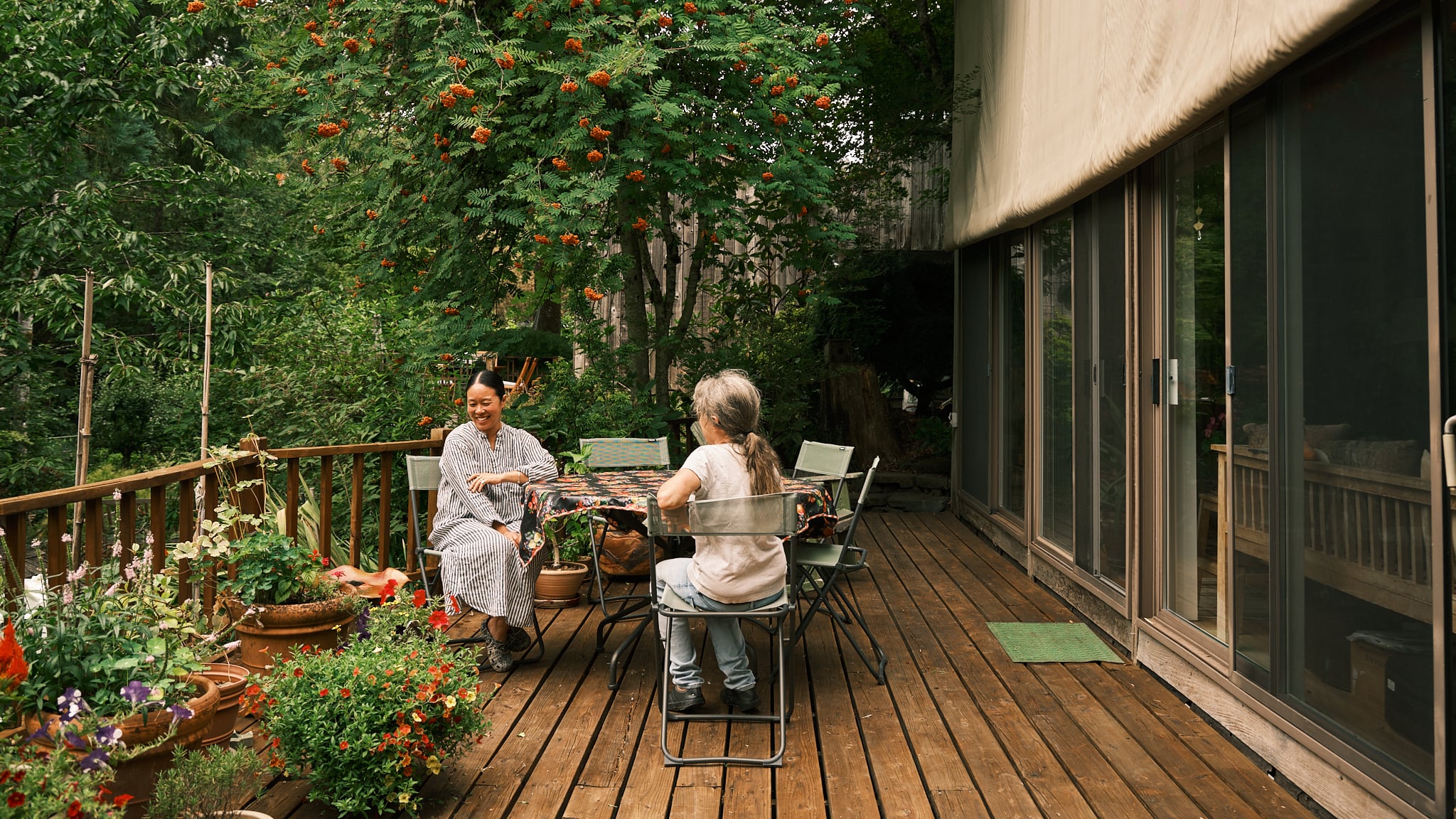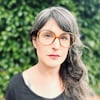“Community With a Sunny Future” is the title of the article, from a 1981 Better Homes and Gardens, about the house that’s now Diana Kim’s. Back then, it belonged to William Church, the architect and cofounder of Sunlight Community, an intentional community founded in 1979 on ideals of energy efficiency and mindful liv- ing. The photos in the article show a sunny indoor garden, an enormous wood stove. and a ring of bright plants that encircle—what else?—a wooden hot tub.
For Kim, owner of downtown Portland’s avant-garde clothier Stand Up Comedy, and her husband, graphic designer Scott Ponik, architecture was the initial draw to Sunlight. For years, the couple had lived in apartment buildings, but when a listing for a modern- ist home in the woods popped up during an online search, Kim was intrigued.
It’s easy to see why: Located on seven and a half wooded acres in Southwest Portland, Sunlight is objectively idyllic. Fifteen individual residences terrace into the hillside; shared buildings and spaces—a large community center, a garden, a treehouse—are connected by one main road and a series of rustic wooden staircases that wind over the property. The houses are elegant and angular, clad in gray cedar sid- ing; each has at least one deck, and all are fronted by south-facing, double-height solariums whose floor-to-ceiling windows and concrete floors draw in and hold heat.
0 of 9
Kim, who grew up in Aloha, never expected to live in a place like Sunlight. “After I left Oregon for college, I only lived in big cities,” she says. She and Ponik met when they both worked at the Walker Art Center in Minneapolis. But beyond the couple’s initial attraction to the aesthetic, she says, “We appreciated the idea of the community—especially what that means in terms of having a child.” (Their daughter, Na Na, is 8.) “It was pretty evident that Sunlight was a singular place, with a deep sense of history and radicalism. We wanted that for Na Na, and for ourselves.”
Sunlight isn’t a commune, but comity is central to both its origins—a mixed-gender group of neighbors in Willamette Heights pooled their money to buy the land—and its continued existence. (It’s the oldest of Portland’s intentional communities.) Residents attend a monthly potluck and meeting, and every decision pertaining to the community requires consensus that’s often preceded by lengthy debates. For former renters like Kim and Ponik, this was definitely an adjustment. “The dedication it takes to steward the land and shared buildings was unexpected,” says Kim, adding “I’d say about 90 percent of the debate at our monthly meetings is about trees.”
The inside of the family’s house is airy, with an open-plan front room that combines kitchen, dining, and living areas. In the solarium, which holds Na Na’s craft table and lodgings for the family’s two rabbits, PomPom and Taffy, striking overhead swag lamps—part of the “CableJewelry” series by German design group Bless—emphasize the room’s height. The bedrooms that open off the central split-level hall are tall and narrow, each with a sizable loft space, complete with ladder, for living, storage, or both. (Kim and Ponik recently added a television to theirs.) The hot tub is long gone; the couple are currently converting one of the house’s decks into a spacious outdoor shower, and are planning to replace the loft ladders with stairs. “People in the ‘80s must have had better balance or something,” Kim says.
DIANA KIM’S TOP FIVE
- THE OREGON FILM MUSEUM IN ASTORIA > “The Oregon Coast is one of the most special places on earth, and The Goonies is a forever touchstone.”
- CINEMA 21 > “I saw truly transgressive, weird stuff there as a teenager that confuses me to this day.”
- IRA KELLER FOUNTAIN > The most amazing thing to have in a very desolate, weird part of downtown.”
- THE PORTLANDIA BUILDING > “My parents operated Cafe Portlandia years ago; I would help during lunch shifts. Michael Graves’s ideas seem very misunderstood in that building.”
- OZONE RECORDS, THE BIG BANG, AND CAPLAN’S SPORTING GOODS > “They’re gone now, but I want to shout them out as three incredible downtown stores that shaped my existence as a teenager.”
This story is part of Nester, Willamette Week’s annual home magazine. It is free and can be found all over Portland beginning Friday, Sept. 22, 2023. Find your free copy at one of the locations noted here, before they all get picked up! Or, order one through our store.










